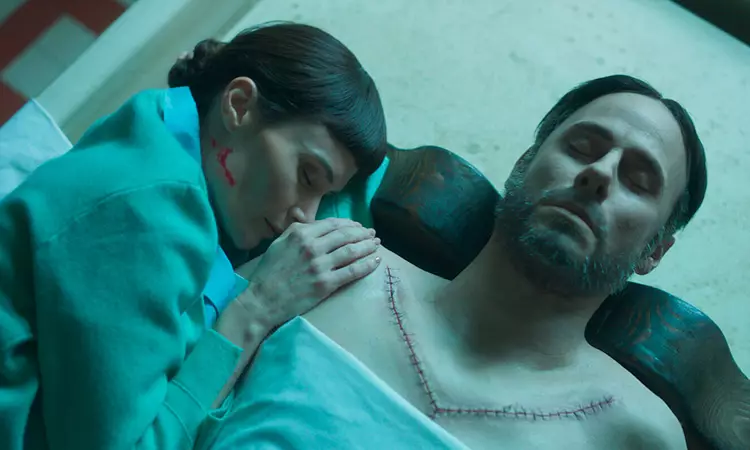“Broken Bird,” a film masterfully crafted by Joanne Mitchell, plunges into the intricacies of unresolved trauma and the often-complicated relationship between life, love, and mortality. From its opening scene featuring a dead bird, the film immerses viewers in a world filled with the grotesque and the poignant, suggesting that beauty can lurk within desperation. Central to this narrative is Sybil Chamberlain, a character who embodies the delicate balance between grief and existential fantasy. As viewers, we are invited to follow her unconventional pilgrimage through sorrow, where death becomes a twisted companion in her journey.
Sybil is not just a mortician; she is a complex weave of ambition, decay, and yearning. Played with remarkable depth by Rebecca Calder, Sybil’s character is as compelling as it is unsettling. Her penchant for taxidermy and the intimate care with which she handles the dead underscore a profound disconnect from the living. The trauma she endured as a child—being trapped for days with the lifeless bodies of her family—sets the tone for her obsessive behaviors and her need for control in a world that feels chaotic and incomprehensible. This traumatic event not only shapes her career but also morphs her identity, forcing her to navigate a reality entwined with the dead.
Sybil’s eccentricities—her vintage fashion choices and her peculiar conversations with cadavers—forge a rich tapestry that questions societal norms surrounding grief and mourning. Rather than viewing death as a finality, she inhabits a transitional realm where the past lingers and the present feels suffocating. The film subtly prompts viewers to reflect on how grief can alter our interactions, how it can transform our very essence into someone unrecognizable to ourselves and others.
In juxtaposition to Sybil’s story, we encounter Emma, a police detective whose life is irrevocably altered by loss. Played by Sacharissa Claxton, Emma is enveloped in a fog of despair following the tragic death of her young son, Jake. The film effectively showcases how Emma’s grief manifests, leading to self-destructive behavior through alcohol and hallucinations. The depiction of her character provides a nuanced exploration of the wounds left by loss, highlighting how mourning can isolate and create delusion as a coping mechanism.
The intersection of these two broken souls unveils the narrative’s rich complexity. Where Sybil’s morbid fascination promotes a form of therapy through her work with the dead, Emma’s struggle oscillates between reality and her overwhelming sadness. Each character’s journey is similarly troubled yet distinct, demonstrating the myriad ways individuals are affected by personal tragedy. Through their intertwining stories, the film urges us to consider the diverse experiences of grief and the varied paths one may take to navigate it.
“Broken Bird” attracts comparisons to genre pieces like “May” and “Kissed,” striking a balance between horror and psychological exploration. The film intricately navigates the dual facets of human nature—our desires for connection and the inevitable march toward death. In this respect, it carefully crafts its horrifying elements to serve as reflections of the characters’ inner turmoil rather than mere shock value. Mitchell’s directorial approach creates moments of discomfort, yet they are laden with profound commentary on the human condition, love, and loss.
What sets “Broken Bird” apart is its ability to weave human emotions into a tapestry of grotesque experiences. The film’s title serves as a metaphor for its characters’ fractured existences and illuminates the recurring theme of resilience amid despair. The dead bird, much like Sybil, represents the fragility of life and the weight of our unprocessed grief, poised delicately between beauty and madness.
“Broken Bird” presents a haunting exploration of grief, presented through the lens of fragmented lives tied together by their experiences with loss. Joanne Mitchell’s directorial debut is not merely an exercise in discomfort but a poignant portrayal of the human psyche’s darker corners. It serves as a reminder that while we may attempt to mask or control our grief, it invariably shapes our realities—carving paths of connection or isolation. The film leaves us with lingering questions: How do we confront our losses? Can we find beauty in the decay? Ultimately, “Broken Bird” is a tragic, yet necessary, reflection on what it means to be human in the face of inexorable mortality.

